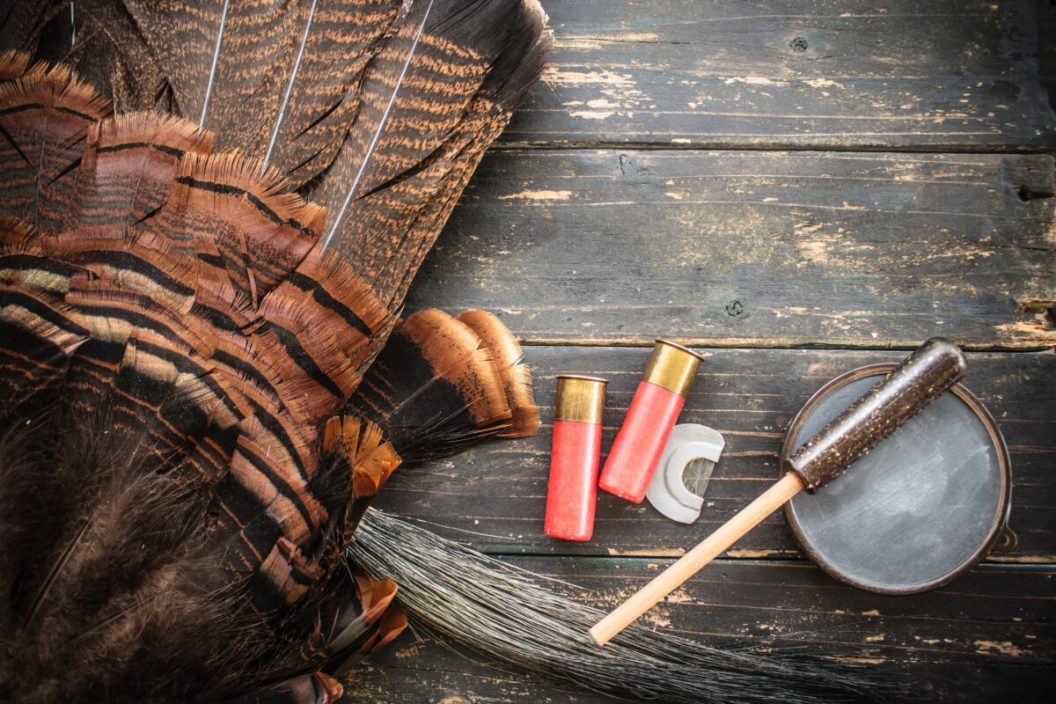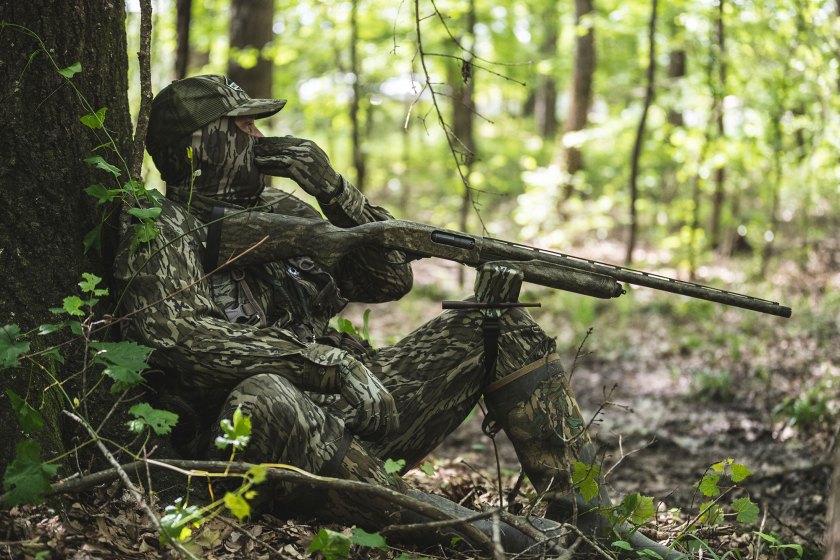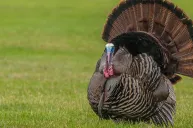Wild turkey hunting is one of the most fun and most challenging missions you may ever try. Turkeys have extremely keen senses with sharp eyesight and excellent hearing, and their behavior can be unpredictable and change rapidly. That means you have to have everything from your camo selection, ground blind construction, and turkey decoy selection dialed when you head out turkey hunting.
But don't overlook the basics: There are many trusted tactics and techniques to help you bring in a tom, but mastering the essentials is what will help you find success this spring. These 13 turkey hunting tips will put the odds in your favor this spring.
1. Scout the Land.

Getty Images, welcomia
If you take any tip away from this list, it should be this one that many hunters overlook: Get out in the woods and listen. You'd be surprised how many hunters don't even bother with proper scouting. Whether your state or ethics allow roost hunting, you still need to get the lay of the land and consider what land characteristics will affect or influence turkey movement.
2. Watch the Weather.
Spring weather is all over the place, which means your conditions will be ever-changing for turkey season. That's important because weather patterns change bird behavior, so pay attention to the forecasts. Snow will slow down breeding behavior, but they still need to eat. Rain will work against a bird's sight, and in my experience, they then seek open fields. Wind will do the opposite, sending them to low, wooded areas. Calm, sunny days will make for the best turkey hunting.
3. Hunt in the Afternoon.
Some of the most productive times to hunt can be first early morning or late in the evening. While you should take advantage of those evening and early morning hunts, too many neglect another key time. Later in the season, hens will be on the nest and toms will be cruising in the afternoons for receptive hens. Don't give up after the sun comes up. Many of my harvests have been on mid-afternoon Toms.
4. Prompt a Shock Gobble.
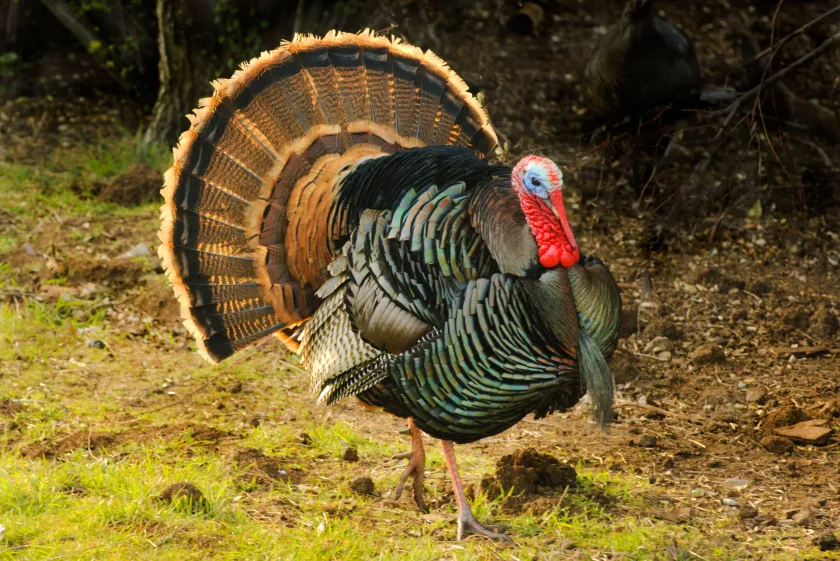
Getty Images, JeffBanke
Scientists don't know why Toms gobble to loud and frightening noises, although most biologists think it's involuntary. Either way, we as hunters can capitalize on it. Whether you're run-and-gun turkey hunting or just scouting, loud noises such as your car horn, slamming the truck door, a loud crow call, or anything that will send an echo through the woods will likely result in a Tom responding with a locator call, giving up his location.
5. Use an Owl Hooter.
Mimicking an owl's hoot can be traced back to the shock gobble, but it seems to be a more consistent approach. Nothing seems to create that location-telling gobble like the sound of an owl hoot, which is why you'll likely find this call in every avid turkey hunter's pack.
6. Resist the Urge to Call Constantly.
This one is hard for most hunters, especially if you enjoy the back and forth calling with an aggressive Tom. But the natural order of turkey breeding involves infrequent clucks. Thus, it's important that you play a little hard to get so you don't tip a Tom off that you aren't actually a hen ready to mate.
7. Find the Hens.
There is an old saying amongst turkey hunters that if you want to find a mature Tom, you first have to find the hens. Spring is the time of the year where the Toms are going to do whatever they can to locate females and stick by them throughout the day.
8. Use the Right Decoys
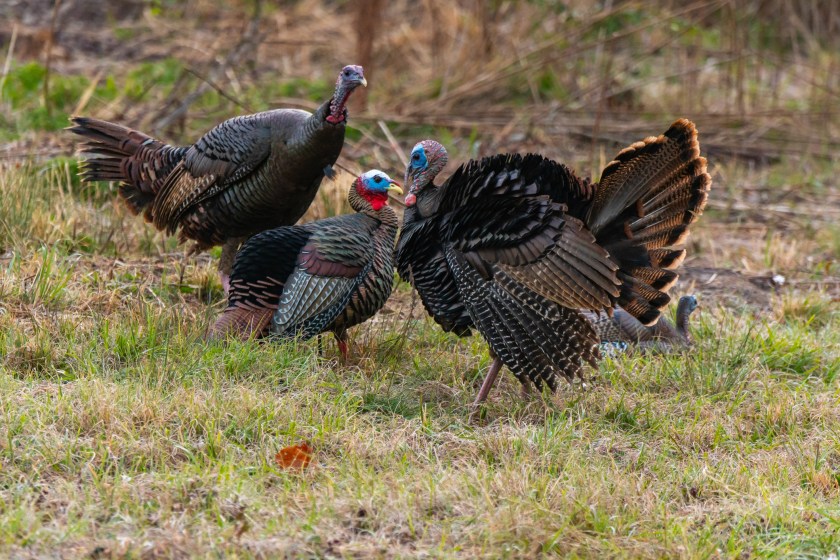
Getty Images, Kerry Hargrove
Based on your hunting location, make sure you're using the right decoy setup. Where turkeys can see a good distance, use more decoys. Don't be afraid to throw out a tom, or even a jake decoy around your hen decoys in strut zones. In thicker cover, stick to the less-is-more mentality.
But remember: Nothing works quite as well as having a live hen within shooting range, enticing a Tom to work his way to you. This adds a different level or realism that is impossible to obtain with plastic decoys. Just make sure that you're as concealed and as still as possible.
9. Use a Mouth Call
It's no secret that turkeys rely on their impeccable sight. Nothing will blow a hunt faster than reaching for a call, or using a call that requires movement. Learn how to properly operate a diaphragm call and keep it in your mouth until that tom is taking a permanent dirt nap.
10. Use Multiple Calls.

Getty Images, PavelRodimov
People buy turkey hunting vests for a reason, and they come with a lot of pockets for a reason. You wouldn't hit the lake with only one lure, so why would you limit yourself to one turkey call? Try that cluck and purr, a yelp, a box call. You never know what a tom will respond to.
11. Stay Concealed.
It has been said that a turkey's vision is roughly four times as acute as a humans. On top of that, they can see the full color spectrum and, due to their eye placement, have a field of vision of nearly 360 degrees. So it's no surprise that concealment is crucial—more so than almost any other hunt. Wear the proper camouflage patterns and ensure that your backdrop is solid.
12. Pattern Your Gun.
It always amazes me when I hear that hunters don't pattern their guns before the season starts. Just because your groups were solid last season doesn't mean they will be this year. Even if your groups are consistent, take this time to experiment with different loads to see which work best. And of course if you're bowhunting, dial in your shots as this will be a much smaller target than what you're likely used to.
13. Get Aggressive.
Don't be too afraid to run and gun. Too many hunters get focused on sticking to the field edges and never changing positions. If you're within earshot range of a tom, move, get closer and use cover to your advantage.
NEXT: TURKEY GRAND SLAM: ALL THE SPECIES NEEDED TO ACCOMPLISH THE GOAL
